
Costume Design

Costume Design
Film by Judit Elek.

Costume Design
Zsadányi flees from the authorities with his goddaughter, Bankós Mari, and they escape into the forest. The film then skips ahead thirty-fold years: Zsadány and Mari are now lovers, with the sound of war in the background halting their romance. The old friends of Zsadányi have joined with the Nazis, and the landowner living with his peasants in a socialist community grows distant from them. Zsadányi is held responsible for political problems in the country, and will pay with his life.
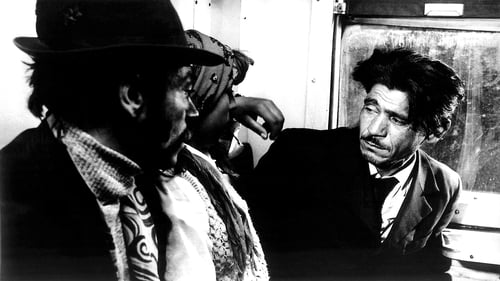
Costume Design
Balog Mihály, the Gypsy man from Szabolcs works in Budapest. That is where he is notified that his young wife died. Again he behaves differently from his fellow-men in the Koportos Gypsy settlement: he wants to give a beautiful, rich burial ceremony to his wife.

Costume Design
The subject-matter of this comedy is age-old: that of the schizophrenic soul. Papa would have liked boy twins years ago, but her wife gave birth to a single child weighing six kilograms. He would like to dampen his feeling of emptiness by having the boy registered both as Péter and Pál.

Costume Design
The university student couple, Andris and Mari, cross Nemesbérc during their summer vacation, to hasten the laying of a memorial stone to the memory of András's martyr father.

Costume Design
György Szomjas’s first feature—made after a decade of short documentaries—is a bold attempt at a goulash western, set on the puszta, or Great Hungarian Plain, in 1837. Mixing Miklós Jancsó imagery and a Sergio Leone narrative, this ballad-like saga opens with image of a lone horseman on the empty plain, riding past a rude gallows. The film concerns the vengeful return of a legendary betyár (outlaw), briefly a hero to the local herdsmen who oppose the state building a canal across their grazing land. Although Szomjas works from ethnographic records and archival material, it is hardly surprising that this violent, primitivist film would be more popular with Hungarian audiences than critics. Replete with young guns, crooked sheriffs, tavern brawlers and hardbitten plug-uglies, this widescreen film is strikingly shot by Elémer Ragályi (cinematographer for most of Gyula Gazdag’s films)—a feast of loamy, autumnal colors.

Costume Design
An unsentimental Hungarian film about the edgy relationship between a middle-aged woman and her young, restless daughter-in-law when the son-husband goes to sea for six months.

Costume Design
Operária fabril solteira, Kata, 43, quer ter uma criança com o seu amante secreto de há muito tempo, um homem casado chamado Joska. Ele não gosta da ideia. Kata faz amizade com a adolescente Anna, abandonada por seus pais aos seis anos de idade. Anna foge da casa de acolhimento e muda-se para casa de Kata para que ela possa continuara estar com o namorado Sanyi. Kata vai ver os pais de Anna e persuade-os a dar aos jovens amantes permissão para casar. Através de Anna, Kata torna-se interessada em crianças negligenciadas e decide adotar um bebê da casa de acolhimento.

Costume Design
The royal summary court sentences Sallai Imre and Fürst Sándor to death on charges of attempting to uproot the state and the social order. The film, the story of which takes place in 1932, enlarges the moment of delivering the death-sentence. Sallai, preparing for his death, envisions the people and the events that have been decisive for his life.

Costume Design
While awaiting his release from the Soviet detention camp he is being held in, a half-starved refugee (Andras Ambrus) finds that an error has been made and his name is not on the to-be-released list. It is then that he is forced to assume the identity of a dead man whose name is on the list. Ambrus at first refuses, but because he was an orphan and cannot produce evidence of his true identity, he has no other choice. However, when he returns to the outer world and the community he was raised in, he is greeted with suspicion. When he tries to claim his part-ownership of a farm from his adopted uncle, he is refused and beaten by farmhands the uncle sets on him.
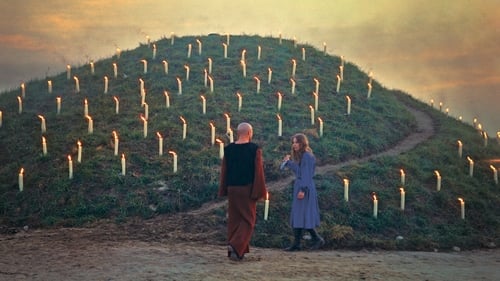
Costume Design
Reminiscente dos últimos trabalhos de Bela Tarr, "Electra, Meu Amor" de Miklós Jancsó é constituída por uma série de extremamente lentos e extremamente longos planos (há apenas oito tomas principais, cada uma com duração de uma bobine inteira de filme). Mais vídeo de música contemplativa do que filme convencional, "Electra, Meu Amor" é baseado em "Oresteia", um mito grego escrito por Ésquilo, um dramaturgo trágico antigo. O filme é protagonizado por Marie Toriocsik como Electra, uma mulher torturada que serve como uma espécie de metáfora para o povo da Hungria e seu sofrimento histórico. Ela percorre a paisagem de Jancso com uma cara melancólica, com raiva de Aegisztosz por conspirar com sua mãe para matar Agamenon, seu pai.

Costume Design
In the summer of 1944 soldier Csorba is rewarded with furlough at a price of having committed a murder. He escapes. He tries to get to the heights of the Carpathians with Mother, to the cave of those who wish to die. That is where his mother and his father, the deserter, might be hiding.

Costume Design
The loving couple of this grotesque parable parody of the Kádár-regime, Mária and István row to an uninhabited, idyllic island. Soon crazy tent-pitchers swarm to the island, led by an official representative of the regime.

Costume Design
The story of the film takes place in 1929 in a model prison providing a kind of reflection how society works out there. Udvardi, the weakling and indulgent director is experimenting with putting in practice a kind of pseudo-humanist utopia about the institution of a 'civilised prison'.
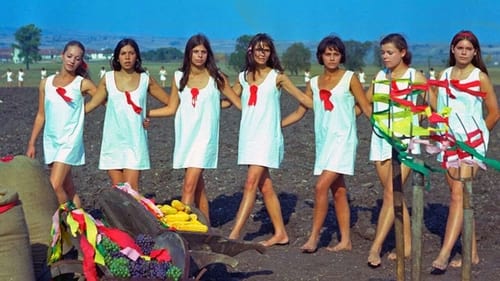
Costume Design
Set in the 1890s on the Hungarian plains, a group of farm workers go on strike in which they face harsh reprisals and the reality of revolt, oppression, morality and violence.

Costume Design
The heroines of this lyric comedy full of burlesque elements are two girls from a village who get totally engrossed in their day-dreaming. Ida and Rozi escape to the city to catch husbands for themselves.
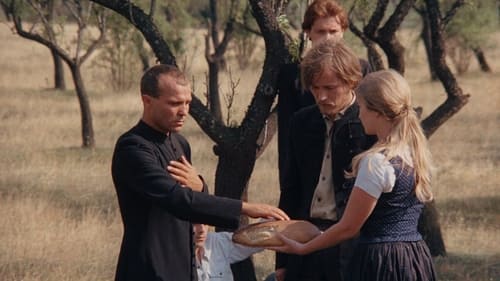
Costume Design
Alegory of the suppression of the 1919 revolution and the advent of fascism in Hungary; in the countryside, a unit of the revolutionary army spares the life of father Vargha, a fanatical priest. He comes back and leads massacres. A new force, represented by Feher, apparently avanges the people, but only to impose a different, more refined and effective kind of repression.

Costume Design
The Monarchy leads a repressive campaign against a Serb village, where an Austrian officer was killed.

Costumer
The film is a historic parable about the topicality of revolution. 1514. The peasants' uprising is over, Dózsa has been arrested. Werbőczy tries to get the imprisoned peasant leader deny the revolution and offers him the lives of his people in exchange.

Costume Design
Epic recalling the early days of the Republic of the councils.

Costume Design
The preparation, in Hungary, of the assassination in Marseilles of King Alexander of Yugoslavia in 1934.

Costume Design
Persuaded by the janitor's wife, a lively, but lonesome old woman, who is only attached to the world through her cherished objects and memories, decides to exchange her two-room apartment for a smaller one. For a little while her everyday life is changed. She meets and entertains new people every day.

Costume Design
Juli is a 17-year-old student who takes a summer job in a local chemical factory. She is befriended by Piri, a girl with an unsavory reputation who has worked there before. The two friends are ogled by male workers who have overactive libidos and imaginations. Juli spurns the advances of a deluded Romeo while Piri continues to work and endure open hostility from the older female workers while her slothful parents sink deeper into alcoholism.

Costume Design
Silêncio e Grito de Miklós Jancsó é ambientado durante uma era turbulenta de inquietação, medo, perseguição e terror, que permeia todos os cantos da sociedade pós-Primeira Guerra Mundial húngara. Em 1919, depois de poucos meses de governo comunista, a República Húngara dos Concílios foi vítima de uma contra-revolução nacionalista. O Almirante Horthy, líder do movimento nacionalista de extrema direita, torna-se o auto-proclamado regente da Hungria, e assume o poder como chefe de Estado legal. Soldados do efémero exército vermelho húngaro estão agora em fuga de implacáveis polícias secretos e unidades de patrulha da Guarda Real nacionalista. Se capturados, os ex-soldados do Exército Vermelho são executados sem piedade ou julgamento adequado. István Cserzi, um ex-soldado do Exército Vermelho fugiu para as Grandes Planícies Húngaras e refugiou-se numa fazenda, administrada por duas mulheres simpáticas. Devido à generosidade destas mulheres e um antigo amigo de infância...
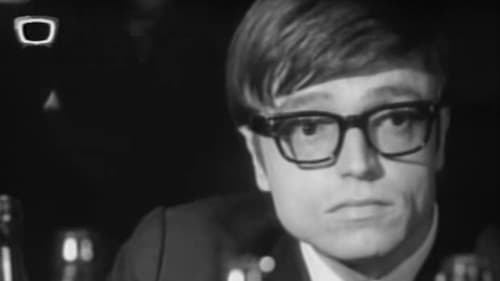
Costume Design
Laci is facing maturation and he wants to work, but his intellectual parents want him to be at the university. Laci feels lonely, because back home the centre is his younger brother and he also deceived in Zsuzsa, his class mate. The girl is already an accomplished pop singer, member of the Illés, and she only returns the love of Laci as a friend. But through Zsuzsa he can meet the members of the well-established group, whose members even lend him their instruments for the concert of the school group. They also play together and another brown girl cheers him already.

Costume Design
After the failure of the Kossuth's revolution of 1848, people suspected of supporting the revolution are sent to prison camps. Years later, partisans led by outlaw Sándor Rózsa still run rampant. Although the authorities do not know the identities of the partisans, they round up suspects and try to root them out by any means necessary.

Costume Design
A group of students cope with the disappearance of their friend.
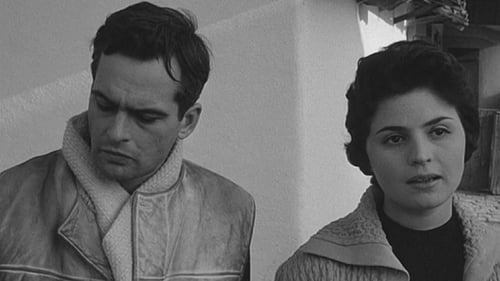
Costume Design
A young doctor undergoes a spiritual crisis when he returns to his rural home.























